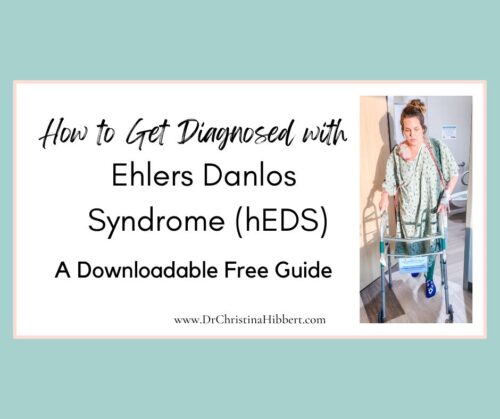How to Get Diagnosed with POTS and Mast Cell Activation Syndrome (MCAS)
When I first heard the words POTS and Mast Cell Activation Syndrome (MCAS), I had no idea what they meant, let alone how they related to me.
I was already knee-deep in recovery from breast cancer, 15 surgeries, and countless complications, including infections from my breast reconstruction, breast implant illness, and eventually, hernia mesh rejection.
I knew something deeper was going on—but no one seemed to know what.

DIEP Flap reconstruction, Sept 18, 2020, my 10th surgery in 14 months. My breast implants made me sick, so I had to start reconstruction over.
It wasn’t until a dear friend, a DNP who specializes in chronic illnesses like POTS & MCAS, reached out and said, “Christi, I think you might have Mast Cell Activation Syndrome,” that the pieces finally began to fall into place.
If you’re reading this, you’re likely in that confusing, exhausting in-between space—knowing something’s wrong, but unsure how to get answers.
This guide is for you.
What Are POTS and MCAS?
POTS (Postural Orthostatic Tachycardia Syndrome) is a type of dysautonomia that causes your heart rate to increase dramatically when you stand. You might feel lightheaded, shaky, brain-fogged, fatigued, or even faint.
MCAS (Mast Cell Activation Syndrome) happens when your mast cells release too many inflammatory chemicals like histamine, prostaglandins, and cytokines—even without a true allergic trigger. This can lead to symptoms across every body system: rashes, GI distress, flushing, itching, headaches, low blood pressure, and more.
These are invisible illnesses that often go misdiagnosed or completely missed. But they’re real. And they’re treatable—once you know what you’re dealing with.
How to Get Diagnosed: Step-by-Step
1. Track Your Symptoms
Start keeping a daily log of your:
- Heart rate (especially lying vs standing)
- GI symptoms
- Skin reactions (rashes, flushing, itching)
- Neurological issues (brain fog, migraines)
- Sleep, pain, temperature intolerance, and more

2. Do a Passive Standing Test at Home (for POTS)
- Lie down for 10 minutes and measure your heart rate.
- Stand up and record your heart rate every minute for 10 minutes.
- An increase of 30+ bpm (or total HR >120 bpm) may indicate POTS.
Take notes to show your doctor.
3. Find the Right Kind of Provider
Look for:
- Cardiologists or neurologists specializing in dysautonomia
- Allergists/immunologists or functional medicine providers familiar with MCAS
- Nurse practitioners who treat EDS, POTS, and MCAS
- EDS/dysautonomia clinics

4. Bring Documentation to Appointments
Show up prepared:
- Symptom logs
- Heart rate data
- Photos of rashes or visible symptoms
- Family history + past labs
Doctors may take you more seriously when you bring data. It’s unfortunate, but it helps.
5. Understand Diagnostic Challenges
There’s no “one test” for POTS or MCAS.
POTS testing may include:
- Passive standing test
- Tilt table test
- ECG or 24-hour monitor
MCAS testing may include:
- Tryptase, prostaglandins, histamine levels
- Urine methylhistamine, PGD2
- Trial response to medications like antihistamines or mast cell stabilizers
Often, clinical diagnosis is what makes the difference. In my case, none of my blood work was remarkable; but I had all of the symptoms.
 Free Download: Diagnosis Guide PDF
Free Download: Diagnosis Guide PDF
I created this resource for those, like me, who have had to fight to be heard.
It includes:
- Symptom tracking tips
- Printable passive stand test
- Diagnosis checklist
- What to say at appointments
- And more…


